▼ IMC 2017 launched by Union Ministry launched [05-31-17]
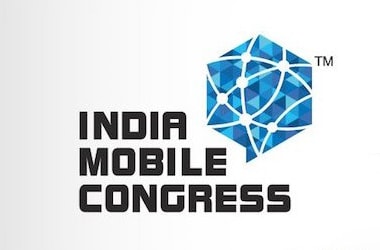 The India Mobile Congress 2017 (IMC 2017), country’s first & the biggest platform to bring together all stakeholders from the domain of Information and Communication Technology (ICT) will take the Indian telecom industry at par with its international counterparts. The India Mobile Congress 2017 (IMC 2017), country’s first & the biggest platform to bring together all stakeholders from the domain of Information and Communication Technology (ICT) will take the Indian telecom industry at par with its international counterparts.
The three-day IMC will be held from 27th to 29th September 2017 at Pragati Maidan, New Delhi and will see participation of government bodies, Telecom Service Providers (TSPs), telecom equipment manufacturers, handset manufacturers and app providers.
IMC 2017 will bring together the global mobile industry, showcase exciting new products & innovation and share the India story, bringing the world to Delhi.
The event is being organised by Department of Telecommunications along with Cellular Operators Association of India (COAI) and other stakeholders.
Besides the stalwarts of the Indian telecom industry, the event will also see participation of various top notch international players who would be exploring avenues for investment in the country.
India is on the cusp of a digital revolution and the telecom industry is gradually evolving from a pure voice market to a mix of voice and data services.
The proliferation of data will enable the spread of financial services and improves access to education governance and health services.
With the Government's favourable regulation policies and 4G services hitting the market, the Indian telecommunication sector is expected to witness a fast growth in the coming years.
|
▼ Deep Ocean Mission set for 2018 launch [05-31-17]
 Ministry of Earth Sciences, Government of India is all set to launch ‘Deep Ocean Mission’ by January 2018. This will improve India’s position in ocean research field. Ministry of Earth Sciences, Government of India is all set to launch ‘Deep Ocean Mission’ by January 2018. This will improve India’s position in ocean research field.
The program on Poly metallic nodules (Pioneer) an ocean research project was initiated at CSIR-NIO with the collection of the first nodule sample from Arabian Sea on board the first Research Vessel Gaveshani on 26 January 1981.
India was the first country in the world to have been given the Pioneer Area for exploration of deep-sea mineral.
This was based on the extensive surveys carried out by the scientists of CSIR-NIO, on several research ships leading to the allocation of an area of 150,000 sq km to the country with exclusive rights under the UN Law of the sea.
Environment Impact Assessment studies for nodule mining by CSIR-NIO, development of metal extraction process by CSIR-National Metallurgical Laboratory, Jamshedpur and CSIR- Institute for Minerals and Metals Technology, Bhubaneswar and development of mining technology by National Institute of Ocean Technology, Chennai, have been taken up under the national program on Polymetallic nodules funded by Ministry of Earth Sciences.
India has now retained an area of 75,000 sq km with an estimated resource of about 100 million tons of strategic metals such Copper, Nickel, Cobalt besides Manganese and Iron.
A First Generation Mine-site (FGM) with an area of 18,000 sq km has been identified. Latest technologies for extraction of metals from the minerals have also been developed under the programme.
Detailed environmental data has been collected for compliance with International Seabed Authorities requirements.
Besides identifying the mineral resource and developing technologies for mining and extraction, the programme has also resulted in high impact research as well as manpower development.
|
▼ National Commission for Backward Classes to be formed [05-31-17]
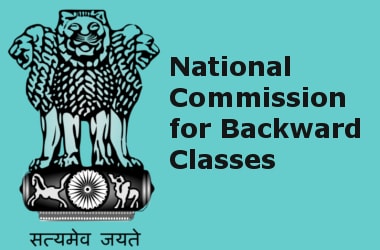 The new National Commission for Backward Classes will be constituted under Article 338B and will commence functioning as a constitutional authority, in the same manner as the National Commission for Scheduled Castes under article 338 and the National Commission for Scheduled Tribes under Article 338A. The new National Commission for Backward Classes will be constituted under Article 338B and will commence functioning as a constitutional authority, in the same manner as the National Commission for Scheduled Castes under article 338 and the National Commission for Scheduled Tribes under Article 338A.
The new Commission will exercise the function of hearing the complaints/grievances of socially and educationally backward classes. It will have the powers of a Civil Court for this purpose.
It will have the duty of advising of the socio economic development of the socially and educationally backward classes and evaluate the progress of their development, unlike the present Commission which does not have this role.
The Venture Capital Fund for Scheduled Castes is to promote entrepreneurship amongst the Scheduled Caste and to provide concessional finance to them.
The projects/units are promoted in manufacturing and services sector ensuring asset creation. The Scheme provides higher level of loans ranging from INR 50 lakhs to 15 crores.
Till date loans amounting to INR 242.36 crores were sanctioned to 65 Scheduled Cast entrepreneurs and INR 118.99 crores has been disbursed.
Skill Training is under taken by the three corporations of the Ministry viz. National Scheduled Caste Finance and Development Corporations (NSFDC), National Backward Classes Finance and Development Corporation (NBCFDC) and National Safai Karamcharis Finance and Development Corporation (NSKFDC).
During the last three years i.e. from 2014-15 to 2016-17, 2.5 lakh beneficiaries have been trained under the skill development programme of the Corporations and the Scheduled Castes Sub Plan. Out of these beneficiaries, 48.42% have got wage/self-employment.
Five places relating to Dr. Ambedkar such as Janam Bhoomi, Mhow; Shiksha Bhoomi 10, King Henry Road, London; Deeksha Bhoomi, Nagpur; Chaitya Bhoomi, Mumbai; and Parinirvan Bhoomi, 26 Alipur Road, New Delhi were declared ‘Panchtirth’ by the Government of India.
Besides this, the Dr. Ambedkar Foundation under Ministry of Social Justice and Empowerment had sponsored 100 students for study tour to Universities of Columbia and London School of Economics (UK) where Dr. Ambedkar studied.
The Minister informed that the Government of India declared 26th November as Constitution Day. Various programmes by Ministries/Departments/ State Government’s were organised throughout the country and Indian Mission abroad.
Department of Empowerment of PwD: Know More
- Department of Empowerment of Persons with Disabilities has created 4 Guinness World Records, during the year 2016-17, as detailed in the list below : -
- First record, created by Biggest Wheelchair Logo/Image by 1000 PwDs at Navsari, Gujarat;
- Second world record, created by fitting 1200 Hearing Aids to 600 persons within 8 hours at a single location at Navsari, Gujarat;
- Third world record, created in Gujarat by lighting most oil lamps simultaneously at a single venue by Divyangjans; and
- Fourth Guinness World Record was created when 3911 persons with hearing impairment were fitted with hearing aids in 8 hours in Manipur.
|
▼ Darwaza Band: Swachh Bharat's new campaign [05-30-17]
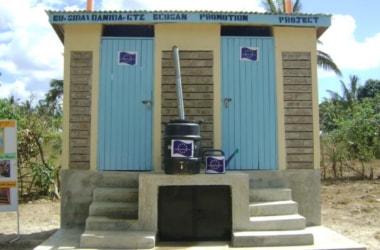 For promotion of toilet usage across the country’s villages, the Ministry of Drinking Water and Sanitation has come out with an aggressive new campaign called Darwaza Band starting May 30th, 2017. For promotion of toilet usage across the country’s villages, the Ministry of Drinking Water and Sanitation has come out with an aggressive new campaign called Darwaza Band starting May 30th, 2017.
Iconic actor, Shri Amitabh Bachchan, who leads the campaign, will be launching it.
The campaign has been supported by the World Bank and is being rolled out countrywide immediately after the launch.
It is designed to encourage behaviour change in men who have toilets but are not using them.
The campaign also features actor, Ms Anushka Sharma, who will be seen encouraging women to stand up for this issue in their villages and assume a leadership role.
Shri Bachchan has been a major supporter and ambassador for the Swachh Bharat Mission and is already associated with its ongoing campaigns.
Behaviour change has been the focus of Swachh Bharat Mission, which is being pursued through a countrywide comprehensive IEC(Information-Education-Communication) programme.
Communication campaigns have been taken up both, at the central and State levels, for promoting sustained use of toilets and for sustaining the Open Defecation Free status achieved.
|
▼ Hindi Advisory Committee: Hindi to be taught voluntarily [05-25-17]
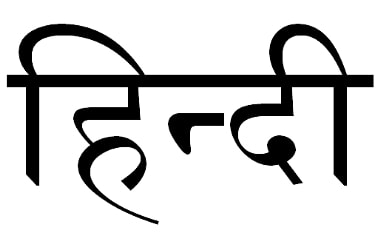 The Hindi Advisory Committee on 22 May 2017 recommended that states should be encouraged to teach Hindi voluntarily instead of directing them to compulsorily teach the language in classes IX and X. The Hindi Advisory Committee on 22 May 2017 recommended that states should be encouraged to teach Hindi voluntarily instead of directing them to compulsorily teach the language in classes IX and X.
The recommendations were made during meeting of the Hindi Advisory Committee of the Ministry of Human Resource Development, held under the Chairmanship of Mahendra Nath Pandey, Minister of State for Human Resource Development, in New Delhi.
The members of the committee emphasized the states to encourage teachers to teach Hindi voluntarily, instead of giving instructions or directions about teaching Hindi compulsorily in class IX and class X.
The members asserted that the Commission for Scientific and Technical Terminology should prepare technical terminology in trilingual form i.e. English, Regional languages and Hindi.
The committee expressed that the ministry should increase the original Hindi correspondence in the Regions ‘A’ ‘B’ and ‘C’ in official use of Hindi.
The Committee also emphasized that to increase the use of Hindi, simple and popular words should be used instead of difficult Hindi words.
In the meeting, 18 offices located in regions ‘A’ ‘B’ and ‘C’ were awarded Rajbhasha Shields for doing excellent work in Official Language implementation.
Two offices located in Tamil Nadu were awarded for doing excellent work in the implementation of Official Language Hindi.
|
▼ SEVA app launched [05-25-17]
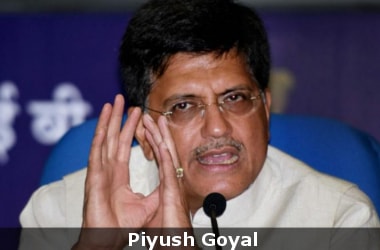 Union Minister of State for Power, Coal and New and Renewable Energy Piyush Goyal on 23 May 2017 launched mobile app Saral Eindhan Vitaran App (SEVA) for quick tracking of coal dispatch. Union Minister of State for Power, Coal and New and Renewable Energy Piyush Goyal on 23 May 2017 launched mobile app Saral Eindhan Vitaran App (SEVA) for quick tracking of coal dispatch.
This unique monitoring app was a joint initiative of the Union Ministry of Power, Coal and New and Renewable Energy and Coal India Limited (CIL).
The app will provide complete information of departmental functioning and transparency to the public. It will track coal dispatch to 118 power plants through fuel supply agreement (FSA) of around 500 MT.
In addition, the dispatch through Special Forward E-Auction and Bridge Linkage from more than 200 dispatch points spread over eight states of the country will also be monitored.
It will provide a summary of quantity of coal dispatched along with grades for the given day, month, and the latest yearly updates.
It will also provide information on rake movement including latest status of indents of rake, allotment and loading which will help consumers making advance logistics planning.
Much of the information on the SEVA dashboard will be available in open access, however, consumer specific data would be password protected on the SEVA Dashboard. The app has a dedicated backend team to monitor the status of specific grievances from consumers and take action on the feedback received on the app.
By using this app, the common man will be able to hold the government accountable for the coal linkage allocations.
This will, in turn, lead to rationalization of coal linkages and finally reduction in the power prices in the country.
|
▼ Ministry of WCD manual for children in conflict with law [05-23-17]
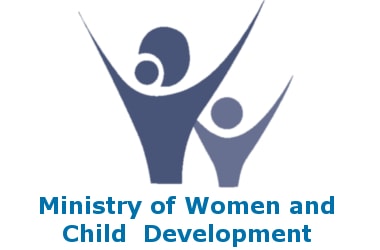 The Ministry of Women and Child Development has developed a manual titled “Living conditions in Institutions for Children in conflict with Law”. The Ministry of Women and Child Development has developed a manual titled “Living conditions in Institutions for Children in conflict with Law”.
The manual was prepared following the directions of the Supreme Court dated 5 February 2016 in the matter of Re-inhuman conditions in 1382 prisons, WP (C) 406 of 2013.
The apex court directed the ministry to prepare a manual similar to the Model Prison Manual as being prepared by Ministry of Home Affairs that will take into consideration the living conditions and other issues pertaining to juveniles who are in Observation Homes or Special Homes or Places of Safety in terms of the Juvenile Justice (Care and Protection of Children) Act, 2015.
The objective of preparing such a Manual for children in conflict with law is to provide guidelines to the States/UTs and other stakeholders which will help them to establish institutions for children in conflict with the law and providing appropriate institutional and rehabilitative services to them.
The Manual has been framed within the purview of the Juvenile Justice (Care and Protection of Children) Act, 2015 and Juvenile Justice (Care and Protection of Children) Model Rules, 2016.
The Rule Book puts in one place all aspects of the living conditions and other issues pertaining to children in conflict with the law who are in Observation Homes, Special Homes and Place of Safety.
It also lays down the processes to be followed by all concerned stakeholders while providing services to children.
The Manual shall enable all duty bearers in Observation Homes, Special Homes and Place of Safety to appreciate the importance of their role and contribute positively and proactively in the rehabilitation of children in conflict with law living in these institutions.
Juvenile Justice (Care and Protection) Act: Know More
- The Juvenile Justice (Care and Protection of Children) Act, 2015 has come into force from today and repeals the Juvenile Justice (Care and Protection of Children) Act, 2000.
- The Juvenile Justice (Care and Protection of Children) Bill, 2015 was passed by Lok Sabha on 7th May, 2015; was passed by Rajya Sabha on 22nd December, 2015 and received Presidential assent on 31st December, 2015.
- The JJ Act, 2015 provides for strengthened provisions for both children in need of care and protection and children in conflict with law.
- Some of the key provisions include: change in nomenclature from ‘juvenile’ to ‘child’ or ‘child in conflict with law’, across the Act to remove the negative connotation associated with the word “juvenile”; inclusion of several new definitions such as orphaned, abandoned and surrendered children; and petty, serious and heinous offences committed by children.
- The focus is also on clarity in powers, function and responsibilities of Juvenile Justice Board (JJB) and Child Welfare Committee (CWC); clear timelines for inquiry by Juvenile Justice Board (JJB); special provisions for heinous offences committed by children above the age of sixteen year; separate new chapter on Adoption to streamline adoption of orphan, abandoned and surrendered children
- Also part of the act is the inclusion of new offences committed against children; and mandatory registration of Child Care Institutions.
|
▼ Cabinet clears 10 PHWR [05-19-17]
 The Union Cabinet has cleared a proposal allowing for the construction of 10 indigenous Pressurised Heavy Water Reactors (PHWR). The Union Cabinet has cleared a proposal allowing for the construction of 10 indigenous Pressurised Heavy Water Reactors (PHWR).
The reactors will have a capacity of 700 MW. These reactors will add 7000 MW capacity and will ramp up nuclear power generation in the country.
Pressurised Heavy Water Reactors use natural uranium as fuel and heavy water as both moderator and coolant.
India’s first PHWR was constructed at Rawatbhata in Rajasthan in technical cooperation with the Atomic Energy Canada Ltd (AECL).
However, the Canada’s support was immediately withdrawn after India’s first nuclear experiment at Pokhran in 1974.
India’s first nuclear power plant with a different design was built at Tarapur in Maharashtra. PHWR units are in operation in Rawatbhata, Kaiga, Kakrapar, Kalpakkam and Narora.
Recently, it was announced that the Nuclear Power Corporation of India Limited (NPCIL) is ready to sell Pressurised Heavy Water Reactors of 220 MWe or 540 MWe capacity to other countries.
NPCIL: Know More
- Founded: 1 September 1987
- Headquarters: 16th Floor, Centre - I, World Trade Centre, Cuffe Parade, Colaba, Mumbai, Maharashtra, India
- Owner: Government of India
- Organization type: State-owned enterprise
- Purpose: Generation of nuclear power for electricity
- Net income: 21.01 billion INR (2012–2013, US$310 million)
- Key person: S. K. Sharma
|
▼ CCEA approves new coal linkage policy [05-19-17]
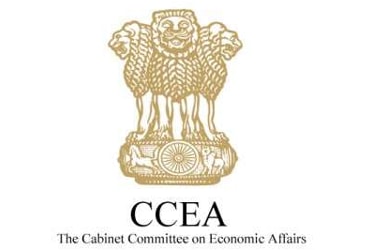 The Cabinet Committee on Economic Affairs (CCEA) has approved a new coal linkage policy to ensure adequate supply of the fuel to power plants through reverse auction. The Cabinet Committee on Economic Affairs (CCEA) has approved a new coal linkage policy to ensure adequate supply of the fuel to power plants through reverse auction.
The new policy will help in ensuring fuel supplies to the power plants in an organised manner.
Though, the government’s initiatives and prevailing market conditions to a large extent has helped to bring down the prices of the dry fuel and boosted the domestic production, a proper mechanism for providing coal linkages to power plants at competitive rates was lacking.
The new policy will address this issue and will ensure proper sourcing of the dry fuel by the power plants as per their schedules.
Coal linkage policy is a policy designated by the union government for the allocation of coal among thermal power plants.
Inadequate availability of domestic coal coupled with high price for imported coal requires the government to allocate the available coal rationally among the power plants.
This is especially necessary as the coal producing firms are public sector companies. Also, the pricing of coal is an another important issue.
In this context, the government designates coal linkage policies to allocate coal among different thermal power plants.
|
▼ Citizens Charter 2017 launched [05-19-17]
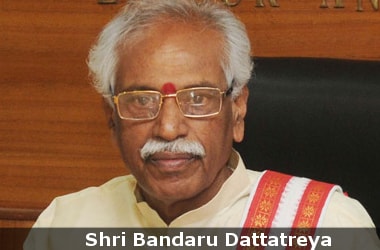 The Minister of State for Labour & Employment(IC), Shri Bandaru Dattatreya launched EPFO’s Citizens’ Charter 2017 and e-court management system in Bangalore on May 16th 2017. The Minister of State for Labour & Employment(IC), Shri Bandaru Dattatreya launched EPFO’s Citizens’ Charter 2017 and e-court management system in Bangalore on May 16th 2017.
Citizens’ Charter 2017 is an attempt to bring transparency and accountability on the part of EPFO and make service delivery system and grievance redressal mechanism more efficient.
Aim is that it delivers goods and services to its all stakeholders in a time bound manner with a reduced timeline from earlier timeline of 30 days.
The timeline in case of claim settlements is 10 days and 15 days in case of grievance redressal management.
The citizens’ charter has been launched with the vision of social security coverage to all employees as well as implementation of policies for benefit of all stakeholders with adequate support level of social security.
EPFO e-court Management System has been launched which is in tune with Digital India. The objective of the project is a transparent and electronic case management system which will cater to aspirations of all stakeholders - the employers, the employees, litigants and CBT.
It is a step towards paperless court system wherein court procedure of EPF & MP Act, 1952 and EPFAT will take place in a digital environment.
Further, in order to facilitate easy access to the tribunal, automated messages will be sent to the litigants on their registered mobile numbers on the status of their cases. The stakeholders can also track the individual cases online.
Now the parties can file all their paper / evidence / documents online and all the details along with status can be accessed online.
Updation is an important part of e-court management system in which digital case record will create a digital database which can be utilized to generate meaningful and accurate reports.
This is also an attempt to create paperless court procedure along with efficiency and transparency in the system.
|
▼ Narmada Seva Mission launched [05-17-17]
 Prime Minister Narendra Modi launched the river conservation project ‘Narmada Seva Mission’ on 15 May 2017 in Madhya Pradesh. Prime Minister Narendra Modi launched the river conservation project ‘Narmada Seva Mission’ on 15 May 2017 in Madhya Pradesh.
The project is a road-map for steps to be taken for the conservation of the Narmada River in the state. S
The PM released a road map for the conservation of Narmada, to ensure it is pollution free.
The roadmap is a result of wide range of consultations with various stakeholders including river conservation experts, environmentalists and others directly associated with the river.
The programme marks the conclusion of ‘Namami Devi Narmade Sewa Yatra’, which was launched on 11 December 2016 by Madhya Pradesh Chief Minister Shivraj Singh Chouhan at Amarkantak.
The five-month Narmada river conservation project awareness campaign was concluded after covering a distance of 3,344 km and passing through over 1,100 villages and towns.
It was hailed as an excellent mass movement by the Prime Minister who also said that it conveyed a larger message of saving the environment.
Several eminent personalities including BJP President Amit Shah, Tibetan spiritual leader Dalai Lama and Union Ministers Rajnath Singh, Uma Bharti, Anil Madhav Dave and Uttar Pradesh Chief Minister Yogi Adityanath took part in the yatra at its different stages.
Besides launching the Narmada Seva Mission, Prime Minister Narendra Modi also took part in Narmada Pujan. Elaborate security arrangements had been made for the same.
The Narmada, also known as Rewa, is one of only three major rivers in the country that flows from east to west.
The other two are Tapti and Mahi.
|
▼ PM Modi proposes new equation for Indian growth [05-12-17]
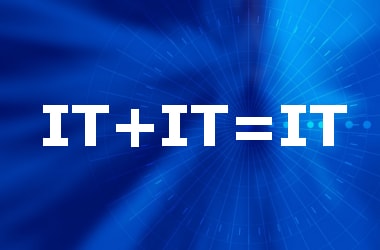 Prime Minister Narendra Modi today devised an unusual equation to describe the future of the country. Prime Minister Narendra Modi today devised an unusual equation to describe the future of the country.
"IT + IT = IT", which means "Information technology + Indian Talent = India Tomorrow" was proposed.
India needs to embrace technology in a more collective manner than in a piecemeal fashion.
It also must be embraced by all sections of society for it to have real benefit,
Embracing technology can't happen if only a few people are keen on it. The scale must be larger.
The PM addressed what he called the "mindset issue".
Mindsets have to change, that will be the beginning. However much we automate things or introduce technology, if mindsets don't change nothing will happen.
E-governance is easy, effective, and economical. It's also environment friendly. Paperless offices will benefit the environment.
Recently the Supreme Court's ICMIS, a digital service was inaugurated which will enable people to file complaints online.
Emphasizing that the need of the hour is to focus on application of science and technology, the PM indicated the digital route the SC is taking is a step in the right direction.
|
▼ Indian Railways acquired EoTT to run trains with guards [05-11-17]
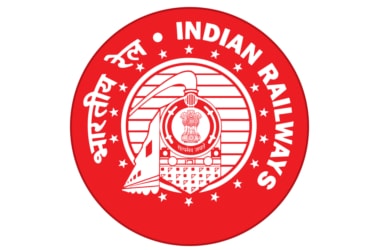 The Indian Railways is set to acquire the End of Train Telemetry (EoTT) equipments to run nearly 1,000 trains without guards in the current fiscal. The Indian Railways is set to acquire the End of Train Telemetry (EoTT) equipments to run nearly 1,000 trains without guards in the current fiscal.
The EoTT system is designed to perform the guard’s job. EoTT system comprises two units, namely, ‘cab display unit’ (CDU) which is fitted on the locomotive and ‘sense and brake unit’ (SBU) which is fitted on the last coach of the train.
The units will be fitted with radio transmitter which can communicate with each other. The transmitter will send signals at regular intervals to the last coach to ensure that the train is running intact.
The Indian Railways will initially acquire 1,000 EoTT equipments for its container operations and later on more units will be procured to be fitted on all trains.
Accordingly, all goods trains on the proposed dedicated freight corridors will run with EoTT system.
Each set of EoTT device will cost approximately INR 10 lakh.
EoTT: Know More
- The EoTT system will help in establishing communication between the locomotive driver and the last wagon of the train.
- It ensures that the train is running as a complete unit.
- In case of parting of coaches from the rear side of the train, it will give indication to the loco driver so that the driver can apply brakes to the rear unit thereby averting collision of the rear portion with the front portion of the train.
- The transmitter at the last coach is connected to the brakes and the brake gets applied so that the broken away portion of wagons do not collide with the front portion.
|
▼ MHA to link courts and prisons through video conferencing [05-10-17]
 The Ministry of Home Affairs has asked all the state governments to link prisons with courts through video conferencing in order to expedite trials and to save costs of escorting undertrials to courts. The Ministry of Home Affairs has asked all the state governments to link prisons with courts through video conferencing in order to expedite trials and to save costs of escorting undertrials to courts.
The Home Ministry’s advisory to the states has been issued following a national conference of heads of prisons in states and UTs on prison reforms.
In the conference, the state governments were advised to implement the following suggestions aimed at having an effective prison administration system:
The states have been asked to integrate prison e-system with Crime and Criminal Tracking Network and Systems (CCTNS) as well as e-courts on a priority basis.
At periodic intervals, combined training of prison, police, health department and judiciary on undertrial management should be conducted.
Separate training module on deradicalisation of prisoners should also be conducted. The states should fill the existing vacancies in all ranks of prison departments expeditiously.
The prison department may have a changed nomenclature and it should have integrated prison, correctional and probation services.
All states should establish a welfare wing comprising welfare officers, law officers, counsellors and probation officers, under their respective prison departments.
To ensure uniformity in prison rules and regulations, all states/UTs should revise their existing prison manuals by adopting provisions of the model prison manual, 2016 prepared by the home ministry.
The Crime and Criminal Tracking Network System (CCTNS) project was initiated in 2009 as part of police modernisation programme under the national e-governance project. It aimed to bring all 16,000 police stations in India under a single network to counter terror challenges.
The core objective of CCTNS is to connect all the police stations so that any of the police stations can contact any other police station; thereby facilitate collection, storage, retrieval, analysis and transfer the information among police stations, state headquarters and central police organizations.
E-Courts: Know More
- E-Courts is a new concept where from filing of a petition till its disposal, use of paper is restricted to bare minimum.
- In a fully equipped e-court, the lawyers would not need to carry bulky files but would come to court with laptops, pen drives and would be able to file the petitions in PDF. E-courts help in various ways such as:
- Aiding judicial administrations of the courts, - Streamlining day-to-day activities, - Assisting Judicial Administration in reducing pendency of cases, - Providing transparency of information to litigants, and judges access to legal and judicial databases.
|
▼ Haryana issues smart house ID [05-10-17]
 In Haryana, detailed data will be collected of every resident and every house would be allotted a smart house ID under a special mission. In Haryana, detailed data will be collected of every resident and every house would be allotted a smart house ID under a special mission.
The smart house ID would be generated through a tablet by visiting every house.
The work on the project is expected to commence from 15 June 2017 and would be completed by 15 August 2017.
A real time-based survey would be conducted to gather the socio-economic data.
The teams of Saksham and e-Numerator would be visiting each house to feed their GPS location in the tablets and create a smart house ID online thereby linking the houses with biometric.
During the survey, details including address of each house, photo, location, electricity connection, water connection, electronic devices, bank account numbers, IFSC code, Aadhaar and personal details of the house owner such as mobile number, e-mail ID, educational qualification and religious affiliation would be gathered.
The data collected is expected to help in getting details of land, pension, scholarship, MGNREGA, loan and LPG.
The state government would make sure that benefits of 150 services of 87 departments are provided online through this data.
The unemployed youth would be provided employment through this survey under Saksham Yojana.
Further, through the survey, bank accounts would be opened of those who have no bank account and Aadhaar cards would be made for those who have not got them as yet.
The Haryana state government plans to make people aware of the survey through the medium of schools, sarpanches and councillors.
|
▼ eVIN wins global best practice in immunisation [05-8-17]
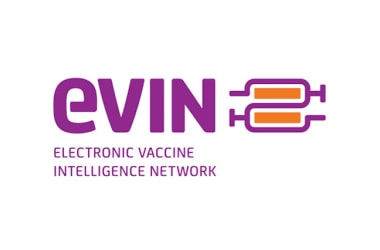 eVIN (Electronic Vaccine Intelligence Network) is an indigenously developed technology system in India that digitizes vaccine stocks and monitors the temperature of the cold chain through a smartphone application. It has been awarded the title of global best practice in immunisation. eVIN (Electronic Vaccine Intelligence Network) is an indigenously developed technology system in India that digitizes vaccine stocks and monitors the temperature of the cold chain through a smartphone application. It has been awarded the title of global best practice in immunisation.
The innovative eVIN is presently being implemented called across twelve states in India.
Electronic Vaccine Intelligence Network aims to support the Government of India’s Universal Immunization Programme by providing real-time information on vaccine stocks and flows, and storage temperatures across all cold chain points in these states.
The technological innovation is implemented by the United Nations Development Programme (UNDP). eVIN aims to strengthen the evidence base for improved policy-making in vaccine delivery, procurement and planning for new antigens in India.
About eVIN: Know More
- eVIN aims to strengthen the evidence base for improved policy-making in vaccine delivery, procurement and planning for new antigens in India.
- eVIN provides an integrated solution to address widespread inequities in vaccine coverage by supporting state governments in overcoming constraints of infrastructure, monitoring and management information systems and human resources, often resulting in overstocking and stock-outs of vaccines in storage centres.
- The integrated solution combines technology, governance and human resources
- eVIN empowers the cold chain handlers by building technical capacities and providing a robust decision-making tool for cold chain managers through a complete overview of vaccine replenishment times, supply and consumption patterns.
- By streamlining the vaccine flow network, eVIN is a powerful contribution to strengthening health systems and ensures equity through easy and timely availability of vaccines to all children.
|
▼ CCEA gives approval for SAMPADA [05-4-17]
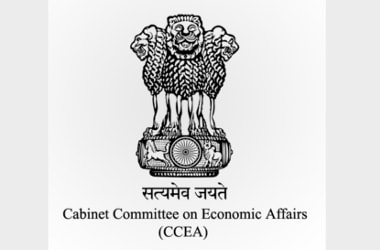 The Cabinet Committee on Economic Affairs, chaired by the Prime Minister Shri Narendra Modi has given its approval for re-structuring the schemes of the Ministry of Food Processing Industries (MoFPI) under new Central Sector Scheme – SAMPADA (Scheme for Agro-Marine Processing and Development of Agro-Processing Clusters). The Cabinet Committee on Economic Affairs, chaired by the Prime Minister Shri Narendra Modi has given its approval for re-structuring the schemes of the Ministry of Food Processing Industries (MoFPI) under new Central Sector Scheme – SAMPADA (Scheme for Agro-Marine Processing and Development of Agro-Processing Clusters).
This is for the period 2016-20 coterminous with the 14th Finance Commission cycle.
SAMPADA with an allocation of INR 6,000 crore is expected to leverage investment of INR 31,40
crore, handling of 334 lakh MT agro-produce valuing INR 1,04,125 crore, benefit 20 lakh farmers and generate 5,30,500 direct/ indirect employment in the country by the year 2019-20.
The objective of SAMPADA is to supplement agriculture, modernize processing and decrease agri-waste.
SAMPADA is an umbrella scheme incorporating ongoing schemes of the Ministry like Mega Food Parks, Integrated Cold Chain and Value Addition Infrastructure, Food Safety and Quality Assurance Infrastructure, etc.
It also covers new schemes like Infrastructure for Agro-processing Clusters, Creation of Backward and Forward Linkages, Creation / Expansion of Food Processing & Preservation Capacities.
The SAMPADA is a comprehensive package to give a renewed thrust to the food processing sector in the country.
It includes new schemes of Infrastructure for Agro-processing Clusters, Creation of Backward and Forward Linkages and Creation / Expansion of Food Processing & Preservation Capacities aim at development of modern infrastructure to encourage entrepreneurs to set up food processing units based on cluster approach.
It seeks to provide effective and seamless backward and forward integration for processed food industry by plugging gaps in supply chain and creation of processing and preservation capacities and modernization/ expansion of existing food processing units.
SAMPADA: Implementation and Background
- The implementation of SAMPADA will result in creation of modern infrastructure with efficient supply chain management from farm gate to retail outlet.
- It will not only provide a big boost to the growth of food processing sector in the country but also help in providing better prices to farmers and is a big step towards doubling of farmers’ income.
- It will create huge employment opportunities especially in the rural areas. It will also help in reducing wastage of agricultural produce, increasing the processing level, availability of safe and convenient processed foods at affordable price to consumers and enhancing the export of the processed foods.
- Food Processing Sector has emerged as an important segment of the Indian economy in terms of its contribution to GDP, employment and investment.
- During 2015-16, the sector constituted as much as 9.1 and 8.6 per cent of GVA in Manufacturing and Agriculture sector respectively.
- The manifesto of NDA Government stresses upon incentivizing the setting up of food processing industry for providing better income for the farmers and creating jobs.
- Various measures have been taken by the government to give a boost to the food processing sector. With these measures food processing sector has grown at 7 per cent.
Initiatives For Food Processing- In order to arrest post-harvest losses of horticulture & non-horticulture produce, the Ministry has accorded approval to 42 Mega Food Parks and 236 Integrated Cold Chains for creation of modern infrastructure for the food processing along the value chain from the farm to the market.
- Out of 42 Mega Food Parks, 8 are operational. Of this, 6 Mega Food Parks have been made operational during the last 3 years.
- Another 4 Mega Food Parks are targeted for operationalization in next three months.
- Similarly, out of 236 Cold Chains, 101 Cold Chains have been sanctioned recently in March, 2017.
- 100 Cold Chains have become operational. Of which, 63 Cold Chains have been made operational during last 3 years.
Government has taken various other measures to boost food processing sector as follows:- To provide impetus to investment in food processing and retail sector, govt. has allowed 100% FDI in trading including through e-commerce, in respect of food products manufactured and / or produced in India. This will benefit farmers immensely and will create back – end infrastructure and significant employment opportunities.
- The govt. has also set up a Special Fund of INR 2000 crore in NABARD to make available affordable credit at concessional rate of interest to designated food parks and agro processing units in the designated food parks.
- Food and agro–based processing units and cold chain infrastructure have been brought under the ambit of Priority Sector Lending (PSL) to provide additional credit for food processing activities and infrastructure thereby, boosting food processing, reducing wastage, create employment and increasing farmers’ income.
|
▼ National Steel Policy 2017 approved [05-4-17]
 The Union Cabinet chaired by the Prime Minister Shri Narendra Modi has given its approval for National Steel Policy (NSP) 2017. The Union Cabinet chaired by the Prime Minister Shri Narendra Modi has given its approval for National Steel Policy (NSP) 2017.
The new Steel Policy enshrines the long term vision of the Government to give impetus to the steel sector. It seeks to enhance domestic steel consumption and ensure high quality steel production and create a technologically advanced and globally competitive steel industry.
Features of NSP
- Create self-sufficiency in steel production by providing policy support & guidance to private manufacturers, MSME steel producers, CPSEs
- Encourage adequate capacity additions,
- Development of globally competitive steel manufacturing capabilities,
- Cost-efficient production
- Domestic availability of iron ore, coking coal & natural gas,
- Facilitating foreign investment
- Asset acquisitions of raw materials & enhancing the domestic steel demand.
The policy projects crude steel capacity of 300 million tonnes (MT), production of 255 MT and a robust finished steel per capita consumption of 158 Kgs by 2030 - 31, as against the current consumption of 61 Kgs. The policy also envisages to domestically meet the entire demand of high grade automotive steel, electrical steel, special steels and alloys for strategic applications and increase domestic availability of washed coking coal. This is to reduce import dependence on coking coal from about 85% to around 65% by 2030-31. Some highlights of New Steel Policy (source PIB):- The Indian steel sector has grown rapidly over the past few years and presently it is the third largest steel producer globally, contributing to about 2% of the country's GDP. India has also crossed 100 MT mark for production for sale in 2016-17.
- The New Steel Policy, 2017 aspires to achieve 300MT of steel-making capacity by 2030. This would translate into additional investment of Rs. 10 lakh Crore by 2030-31.
- The Policy seeks to increase consumption of steel and major segments are infrastructure, automobiles and housing. New Steel Policy seeks to increase per capita steel consumption to the level of 160 Kgs by 2030 from existing level of around 60 Kg.
- Potential of MSME steel sector has been recognised. Policy stipulates that adoption of energy efficient technologies in the MSME steel sector will be encouraged to improve the overall productivity & reduce energy intensity.
- Steel Ministry will facilitate R&D in the sector through the establishment of Steel Research and Technology Mission of India (SRTMI). The initiative is aimed to spearhead R&D of national importance in iron & steel sector utilizing tripartite synergy amongst industry, national R&D laboratories and academic institutes.
- Ministry through policy measures will ensure availability of raw materials like Iron ore, Coking coal and non-coking coal, Natural gas etc. at competitive rates.
Steel in India- Steel is one of the most important products in the modern world and forms the backbone to any industrial economy.
- India being one of the fastest growing economies in the world, and steel finding its extensive application right from construction, infrastructure, power, aerospace and industrial machinery to consumer products, the sector is of strategic importance to the country.
- The Indian steel sector has grown exponentially over the past few years to be the third largest producer of steel globally, contributing to about 2% of the country's GDP and employing about 5 lakh people directly and about 20 lakh people indirectly.
- Untapped potential with a strong policy support becomes the ideal platform for growth.
|
▼ Rashtriya Swachhta Kendra at Rajghat [05-4-17]
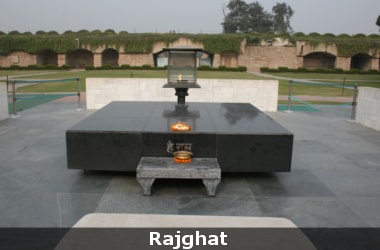 “Rashtriya Swachhta Kendra” will be set up by “Swachh Bharat Mission” Ministry of Drinking Water and Sanitation at Gandhi Smriti and Darshan Samiti (GSDS), Rajghat by “Swachh Bharat Mission” Ministry of Drinking Water and Sanitation. “Rashtriya Swachhta Kendra” will be set up by “Swachh Bharat Mission” Ministry of Drinking Water and Sanitation at Gandhi Smriti and Darshan Samiti (GSDS), Rajghat by “Swachh Bharat Mission” Ministry of Drinking Water and Sanitation.
This is as per the vision of Prime Minister during the centenary year of Champaran Satyagraha and the Ministry of Culture is considering to provide space for the purpose.
This was announced at “Swachhata Pakhwada” of Ministry of Culture.
A total of 275 effort hours for cleanliness and awareness during Swachhata Pakhwada and A total of 82 activities/events were organised by the Ministry and its organizations during the Swachhata Pakhwada aimed to create awareness on “Swachhata”.
Ministry of Culture has developed “e-guide (Audio-Visual) App e3.eguide.net.in” to create awareness for the tourists visiting National Museum.
Swachh Bharat Mission (SBM) is not only the top priority of the Government but it has become a national mission for the people of India and positive results are pouring in from every nook and corner of the country.
Since its launch on 2nd October, 2014, till date more than 4 crore individual household latrines have been built and one lakh, 94,000 villages and 135 districts have become Open Defecation Free, ODF.
Apart from Sikkim, Kerala and Himachal Pradesh which are ODF Sates, 6 to 7 more States will soon declare them ODF as the work is going on a rapid scale.
Budget for Swachh Bharat Mission is now INR 19,300 crore with a Central share of INR 14,000 crore and INR 5,300 crore is the budgetary provision declared by all government departments as they had been asked to make a special mention of Swachh Bharat Abhiyan in their budget proposals, besides finalising their ‘Swachhta Action Plan’.
Swachhata Pakhwada
On completion of 3rd year of Swachhata Abhiyan, Ministry of Culture and Tourism organised “Swachhata Pakhwada” from 16th – 30th April, 2017.
During the period, they initiated various Swachhata activities namely;
(i) creating permanent mechanism of cleanliness for all organisations under Ministry of Culture and Tourism ;
(ii) to spread awareness through various cultural activities by involving all their organisations: and
(iii) spread of swachhata awareness through Music, Dance and Drama by its Academies and maintaining cleanliness at all ASI Protected Monuments etc.
|
▼ Labour and employment ministry launches labour day schemes [05-2-17]
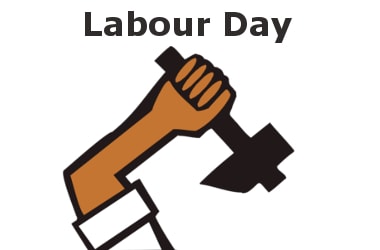 Minister of State (I/C) for Labour and Employment, Shri Bandaru Dattatreya launched two schemes “One IP- Two Dispensaries” and “Aadhaar based Online Claim Submission” on the occasion of International Labour Day on May 1, 2017. Minister of State (I/C) for Labour and Employment, Shri Bandaru Dattatreya launched two schemes “One IP- Two Dispensaries” and “Aadhaar based Online Claim Submission” on the occasion of International Labour Day on May 1, 2017.
Under One IP- Two Dispensaries scheme, ESIC has given an option to an Insured Person (IP) to choose two dispensaries, one for self and another for family through an employer.
This will benefit all IPs, especially migrant workers who are working in other than home State, while their families are living in their native States.
Because of non-availability of option of second dispensary, the dependant members of family are often deprived of medical benefits.
By introducing the concept of ‘One IP- Two Dispensaries’, IP as well as their family members would now be able to get treatment from either of the dispensaries and in case of emergency from any ESI Institution.
As of now, around 3 crores IPs are covered under ESIC and total number of beneficiaries i.e. IPsand their family members is over 12 crores.
Under Aadhaar based Online Claim Submission scheme all EPF Members who have activated their UAN and seeded their KYC (Aadhaar) with EPFO will be able to apply for PF final settlement (form19),
Pension withdrawal benefit (Form10-C) and PF part withdrawal (Form31) from the their UAN Interface directly.
The three forms collectively form more than 80% of EPFO’s claim workload. Members can complete the whole process online and they neither need to interact with the employer nor with the EPFO field office to submit online claim.
They are not required to give any supporting document while preferring online PF part withdrawal case. Member’s applying online will be taken as his self-declaration for preferring the advance claim.
GoI Labour Initiatives
- Government has recognised the importance of labour and the contribution of workers and is dedicated to their welfare.
- It is ensuring job security, wage security and social security to them
- As per the scheme ‘SPREE’ by ESIC the new accounts of 77 lakh individuals and 66 thousand establishments have been opened and EPFO has also added around 50 lakhs new accounts in its recently launch scheme
- 34 million registrations have already been done on National Career Service (NCS) Portal.
|
▼ Aadhaar number to be compulsory for personnel and regulatory filings [05-2-17]
The government is set to make quoting of Aadhaar number compulsory for key managerial personnel and directors in regulatory filings under the Companies Act.
The move, basically aimed at tackling the issue of bogus identities, comes at a time when authorities are bolstering measures to deal with the menace of shell companies.
These are suspected to be used for laundering illicit funds.
Moving towards implementation of the Aadhaar requirement under the companies law, the Corporate Affairs Ministry has already asked individual stakeholders to obtain Aadhaar at the earliest for integrating their details with MCA21.
MCA21 is the portal through which filings required under the Companies Act are submitted to the Ministry.
The idea is to have a system in place which would help in identifying the stakeholders whose name come up in the filings made through MCA21.
The move also assumes significance against the backdrop of instances where authorities have found discrepancies in personal details provided by individuals in the regulatory filings.
Aadhaar number along with the filings would help ascertain the authenticity of the individuals.
With respect to foreign entities, a separate system would be worked out by the Ministry.
There are more than 16 lakh registered companies.
While asking individual stakeholders to obtain Aadhaar at the earliest, the Ministry had emphasised that information in Aadhaar should be in harmony with PAN (Permanent Account Number).
When implemented, all MCA21 services shall be available based on Aadhaar-based authentication only.
Individual stakeholders, including “DIN (Director Identification Number) holders/ Directors/ Key Managerial Personnel” as well as certain professionals have been asked to obtain Aadhaar.
Professionals of the institutes of chartered accountants, company secretaries and cost accountants have been asked to get Aadhaar as early as possible.
This would be applicable irrespective of whether the individual is in “employment or in practice”.
As many as 8-9 lakh registered companies are not filing annual returns with the Ministry and are a potential source of money laundering.
|
▼ Digi Yatra: Now Aadhaar, cell number for boarding and security checks [05-2-17]
The Ministry of Civil Aviation under the proposed “Digi Yatra” initiative is aiming to make boarding pass and security check-ins digital at airports using Aadhaar and mobile phones.
As per this initiative, a digital mode for airport entry and verification of passengers would be used.
The move is aimed to ease the security and boarding procedure.
Digi Yatra initiative aims to make the whole air travel experience completely digital.
The proposed initiative would not require any paperwork and the traveller will be securely identified through Aadhaar number, passport or other documents.
The ministry is now working on establishing a uniform set of standards and protocols which can be applied across the system.
The ministry expects to roll out the initiative in the coming months.
Alongside the ministry is also in the process of coming up with an approach to have a no-fly list based on safety.
The government has decided to come with a no-fly list in the wake of instances of unruly behaviour by air passengers that endanger the safety of all passengers in an aircraft.
By having a ‘no fly list’, the government wants to ensure that the unruly passengers are not able to fly and are appropriately dealt with.
|
▼ J&K to get all India IRB [05-2-17]
The Home Ministry has planned to raise an all-woman India Reserve Battalion (IRB) in Jammu and Kashmir.
The decision has been taken in the wake of girl students throwing stones at security forces in Srinagar.
The all-woman battalion will be one among the five IRBs that has been sanctioned by the Central government for the State last year.
The all-woman battalion’s major role would be to tackle protesters. Apart from that, it would also be assigned other law and order duties.
The cost of raising battalions would be INR 61 crore and 75% of the expenditure will be borne by the union government.
The Indian Reserve Battalion is an elite unit trained to deal with a specific situation.
It is a type of Armed Police Force that has been sanctioned to States and Union Territories.
IRB: Know More - India Reserve Battalion (IRB) is raised to provide employment opportunities to the local youths.
- Around 60% of vacancies reserved for candidates from the border districts.
- Though IRB personnel are usually deployed in their respective states, they can also be deployed elsewhere if necessary.
|
▼ Jal Sanrakshan Karyakram-Bundelkhand held [05-2-17]
Uma Bharti, the Union Minister for Water Resources, River Development and Ganga Rejuvenation launched ‘Jal Sanrakshan Karyakram- Bundelkhand’.
This is an extensive water conservation programme launched on 28 April 2017 at Bandri, Sagar in Madhya Pradesh.
It aims to focus on the drought-prone areas of Bundelkhand, Kalahandi, Bolangir, Marathwada and Koraput in Odisha.
A master plan for the artificial discharge of ground water in the Bundelkhand region was also prepared.
The Water Resources Ministry has identified around 1100 percolation tanks, 14000 small check dams or Nala bunds and 7200 Recharge pits/shafts in Bundelkhand.
It has also proposed the construction of 234 wells in five districts of Bundelkhand in UP including Hamirpur, Jalaun, Banda, Mahoba and Chitrakoot and 259 wells in six districts of Bundelkhand in MP, as a part of ground water exploration.
New initiatives under National Ground Water Management Improvement Schemes (NGMIS) to improve ground water conditions in stressed blocks and ensure sustainability of the resource both quantitatively and qualitatively are on the anvil.
Six districts covering an area of 11851 sq km in UP’s Bundelkhand region and five districts covering an area of 8319 sq km in MP’s Bundelkhand region have been considered under the initiative.
Further, the Ministry would be preparing an Incentivization Scheme for Bridging Irrigation Gap (ISBIG) scheme to complete Command Area Development and Water Management (CADWM) works.
The aim is to correct the system deficiencies in the canal network to bridge the gap between Irrigation Potential Created and Irrigation Potential Utilised and to provide assured supply of water to every farm field among other things.
The scheme is expected to benefit Jhansi, Jalaun, Hamirpur, Lalitpur and Banda districts in UP’s Bundelkhand region and Tikamgarh and Datia districts in MP’s Bundelkhand region.
|
▼ Test and Treat policy for HIV patients [05-2-17]
Union Health Minister JP Nadda has launched the Test and Treat policy for Human Immunodeficiency Virus (HIV) patients.
As per this new policy, anyone who is tested and found positive will get the necessary treatment free of cost. Anyone found positive will be provided with ART (Anti- Retroviral Therapy) irrespective of his CD count.
The scheme will be a centrally sponsored scheme.
All men, women, adolescents and children who have been diagnosed positively can benefit under this new policy.
|